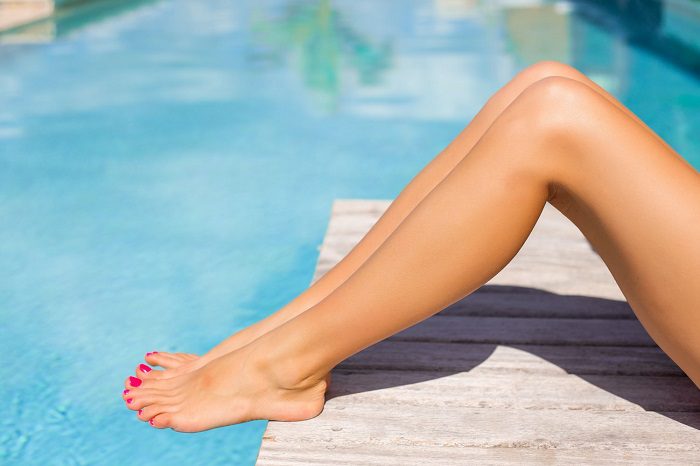Most people look forward to sunny, warm weather in the summertime. But for patients with varicose veins, this season’s high temperatures and harsh sunlight can exacerbate symptoms of their vein disorder.
Knowing that summer is upon us, you can take preventative measures to avoid bulging, discoloration, and pain associated with vein diseases.
Your vascular specialist can treat these conditions, but you can limit them before they arrive if you take your doctor’s advice. Read on to find three tips that can reduce varicose veins discomfort during the summer months.

Continue Wearing Compression Stockings
Hot weather means you might break out shorts, skirts, or bathing suits that show off your legs. As you do, you likely do not want to wear compression stockings that will then appear highly visible on your legs. You might prefer to skip wearing them to avoid an extra layer of clothing in the heat.
However, compression stockings play a crucial role in improving blood flow. The pressure of these stockings squeezes the veins so that blood continues to move where needed rather than pool and collect in the vessels where they can bulge and hurt.
You can wear a thin type of stocking during the summer to avoid overheating while still promoting good vascular health. If the heat becomes too unbearable, you may remove them. Wearing them even for a short time is better for you than skipping them completely.
Limit Direct Sunlight
If you do have bare legs outside this summer, be careful about exposing problematic veins to direct sunlight. Heat and UV rays can both worsen varicose veins symptoms. This is because the veins expand naturally to help the body cool down, and as a result, blood can pool, making veins bulge and feel uncomfortable.
Consider spending time in the shade if you do not cover up your legs with compression stockings or long pants. Limit your time in the sunlight if you can so that you can prevent flare-ups in your veins.
Keep Elevating and Moving Your Legs
Your vein doctor likely already told you that the key to good vascular health is improving circulation through the blood vessels, especially in the legs where varicose veins often manifest. You can make an effort to promote healthy blood flow by avoiding sitting and standing for long periods.
Instead, you should try to keep your legs moving, engaging in walking or other light exercise for at least 30 minutes per day. If you have a history of vein disease, remember to keep your legs elevated when you can. This will prevent drainage of blood to the legs that could otherwise result in swelling.
Continue to follow advice like this from your doctor as you enter the summer months. This can reduce your chances of seeing uncomfortable symptoms of varicose veins and other disorders in your legs. Consult your doctor with any concerns or questions regarding your vein health at any time of the year.
